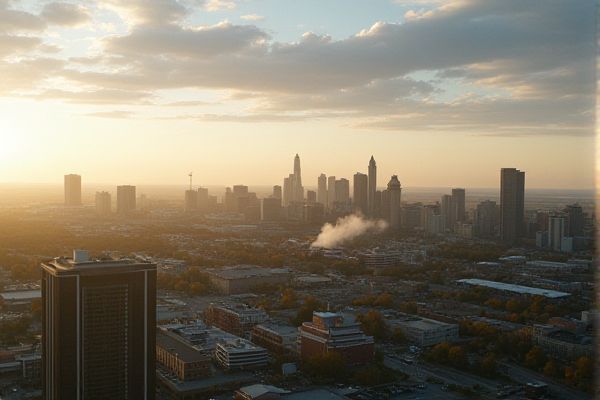
What to know as new resident in South Dakota: Weather extremes and appropriate attire. Cost of living differences. Local healthcare facilities. Education system and schools. Job market and employment opportunities. Local cultural events and festivals. South Dakota tax policies. Transportation options and infrastructure. Hunting and fishing regulations. Outdoor activities and attractions.
Weather extremes and appropriate attire
South Dakota, particularly Western South Dakota and Northeastern Wyoming, experiences a short but active severe weather season from late May through August, with frequent severe thunderstorms, large hail, damaging winds, and tornadoes. The Severe Weather Climo page offers crucial information for those preparing for this intense season. Appropriate attire includes layers for hot and sunny weather, as well as clothing that can withstand sudden temperature changes, heavy rain, and colder nights.
Cost of living differences
South Dakota has a lower cost of living compared to the national average, with housing 12% lower, utilities 13% lower, and overall costs 7% lower. The average monthly expense for one person is $4,083, with housing costs ranging from $507 for a studio rent to $1,557 for a median monthly mortgage. For more detailed insights into these financial aspects, consider exploring the Cost of Living in South Dakota on SoFi's website.
Local healthcare facilities
In South Dakota, new residents should be aware that the state requires licensure for various healthcare facilities, including hospitals, nursing facilities, and ambulatory surgery centers, with specific regulations and certification requirements for Medicare and Medicaid reimbursement. The state also provides a wide array of public health services through local community health offices and federally qualified health centers.
Education system and schools
In South Dakota, the education system typically offers free public education from kindergarten to 12th grade, with students required to attend school until age 18. The system is structured into elementary, middle or junior high, and high school, featuring a range of mandatory subjects and elective options. For those seeking different educational environments, alternatives such as home schooling and special schools are available for students with specific needs. For more details on local educational institutions, you can visit the Aberdeen School District website, which provides insights into the schooling options available within the community.
Job market and employment opportunities
South Dakota's job market is projected to grow by 8.5% from 2020 to 2030, adding over 41,100 new jobs, with significant growth in occupations such as wind turbine service technicians, nurse practitioners, and information security analysts, among others. The state also has a high number of job openings, with over 26,000 available as of August 2024, and offers attractive benefits including no personal income tax and high wages. For more detailed information on these projections, visit the South Dakota Labor Market Information Center.
Local cultural events and festivals
South Dakota offers a rich cultural scene with various festivals and events, including the Sturgis Motorcycle Rally, Rapid City Summer Nights, and numerous cultural celebrations that highlight the state's music, art, historical reenactments, and Native American traditions. These vibrant festivals, detailed on South Dakota, showcase the diversity and unique heritage of the region, providing both locals and visitors with an immersive experience that connects them to the past and present cultural narratives of the area.
South Dakota tax policies
South Dakota stands out as one of the lowest taxed states in the nation, thanks to its lack of state income tax, pension tax, personal property tax, and inheritance tax. This tax-friendly environment is further complemented by a combined state and municipal sales tax that ranges from 4.2% to 6.2%. Employers in the state benefit from an unemployment tax system based on experience, where rates decrease over time for positive account balances. To learn more about these advantageous fiscal policies, visit the Why South Dakota page. These factors combined make South Dakota an attractive place for both businesses and individuals seeking to minimize their tax burden.
Transportation options and infrastructure
South Dakota offers a robust transportation infrastructure, including a network of highways, seven regional airports, and an extensive rail system with ten freight railroads. The state is also set to benefit from the Bipartisan Infrastructure Law, which will fund repairs and improvements to roads, bridges, and public transportation, as well as the installation of EV chargers. To learn more about these developments, you can visit the official website for South Dakota's Transportation Infrastructure initiative. With these enhancements, the state's transportation framework is poised to support economic growth and innovation in the region.
Hunting and fishing regulations
As a new resident in South Dakota, it is essential to understand that individuals 18 years or older must purchase a fishing or hunting license and a habitat stamp, with certain exemptions such as youth under 18, landowners fishing on their own property, and specific license types. A variety of licenses are available, including annual, combination, senior, and one-day licenses, each accompanied by its own regulations and requirements. For comprehensive details on these options, the official Fishing Handbook is an invaluable resource, providing all necessary information for residents and visitors alike.
Outdoor activities and attractions
As a new resident in South Dakota, you can explore a variety of outdoor activities and attractions, including world-class fishing, hunting, hiking, and camping, as well as unique experiences like stargazing in Badlands National Park, rock climbing in Custer State Park, and sailing on Lake Oahe and Lewis & Clark Lake. The state also offers scenic trails like the Mickelson Trail, caving at Wind Cave National Park and Jewel Cave National Monument, and agate hunting in Buffalo Gap National Grassland.
